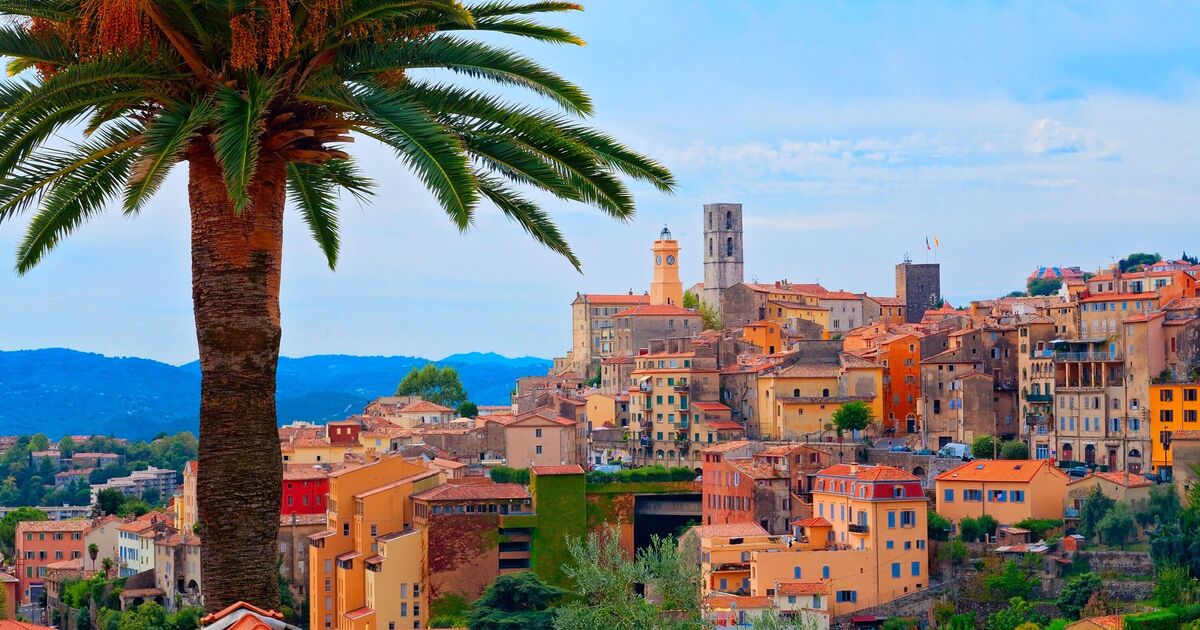Take a deep breath to inhale the sweetest-smelling town in Europe! Not just the lavender that grows in abundance in Provence, but the eau de toilette, soaps, powders… of which the fragrances come from the flowers in the surrounding countryside.
In the 19th century, Grasse became the world perfume capital and a big tourist destination, and it still is today. Just 12 miles from Cannes, at 300-400 metres altitude, Grasse really is a breath of fresh air in a verdant setting of mountains, forests and caves.
Although the fourth biggest town of the department of the Alpes-Maritime, and often lively, it is mostly a place for rest and relaxation.
Grasse boasts an illustrious past and many famous and important people have stayed here, including the Emperor Napoleon, his sister Princess Pauline Bonaparte, who liked it so much she stayed for a year in 1807-08, our own Queen Victoria and the actor and writer Dirk Bogarde.
The Rothchild family have all been associated with the town and given the beauty of the surrounding countryside, Grasse has drawn in artists like Monet, Munch, Renoir, Picasso, and Van Gogh, as well as writers like H.G. Wells and F. Scott Fitzgerald.
As you make your descent towards the old town centre, you will discover the maze of narrow and shaded streets that make up the historic quarter, with buildings from the Middle Ages and the Renaissance. All the streets converge at the Place du Puy and the Notre Dame du Puy Cathedral (also reached by the arch leading to the Place Godeau). Built between the 10th and 11th centuries and altered again in the 17th century, its immense bell tower was added in the 17th century. This Romanesque church houses a magnificent altarpiece by Louis Brea, paintings by Rubens and one by Fragonard as well as stained-glass windows and statues.
But Grasse’s real history is in its perfumes. According to the local tourist board www.avignon-et-provence.com the tanning of leather had been the city’s main activity in the Middle Ages until it reached its peak in the 17th century.
A spokesperson said: “With the concept and then growing popularity of perfumed gloves, this period saw the birth of the perfume industry, which reigns supreme since.
“Today, the industry with its 30 perfume factories remains discreet but three manufacturers open their doors to you and offer free guided tours. The Parfumerie Fragonarrd with its historic factory and perfume shop, the Parfumerie Molinard and the Galimard Factory and Museum. The tours let you discover all the steps in perfume making, from the gathering of the flowers to the bottling, and at the end of the tour, the visitor can create and go home with her, or his, own perfume.”
The International Perfumery Museum (MIP), situated in the centre of Grasse, retraces the 3000 years of perfume’s history in its exceptional setting and the MIP’s Garden in Mouans-Sartoux is a perfume plant conservatory and is a good place to start if you want to learn all about this incredible industry.
Other museums include The Museum of Art and History of Provence, in the former Cabris Mansion, which evokes life in Grasse in the 18th century. Visitors can admire the rooms in the mansion just as they were when the Marquise de Clapiers-Cabris lived there.
There is also the Villa-Musée Fragonard, set up in the Hôtel de Villeneuve, a magnificent residence from the 18th century, showing many works by the artist Jean-Honoré Fragonard, a child of Grasse who became “painter to the King”, as well as by his descendants, including an amazing trompe l’oeil in the stairway created by his son, only 13 years old at the time.
Other interesting places to explore include the caves around Grasse with their evocative names, such as the Trou du Curé (the Priest’s Hole)
And it is good news for tourists without cars. Grasse has a train station with regular service from Cannes, Nice and Ventimiglia so the town is a perfect day trip if you are staying on the French Riveria.

